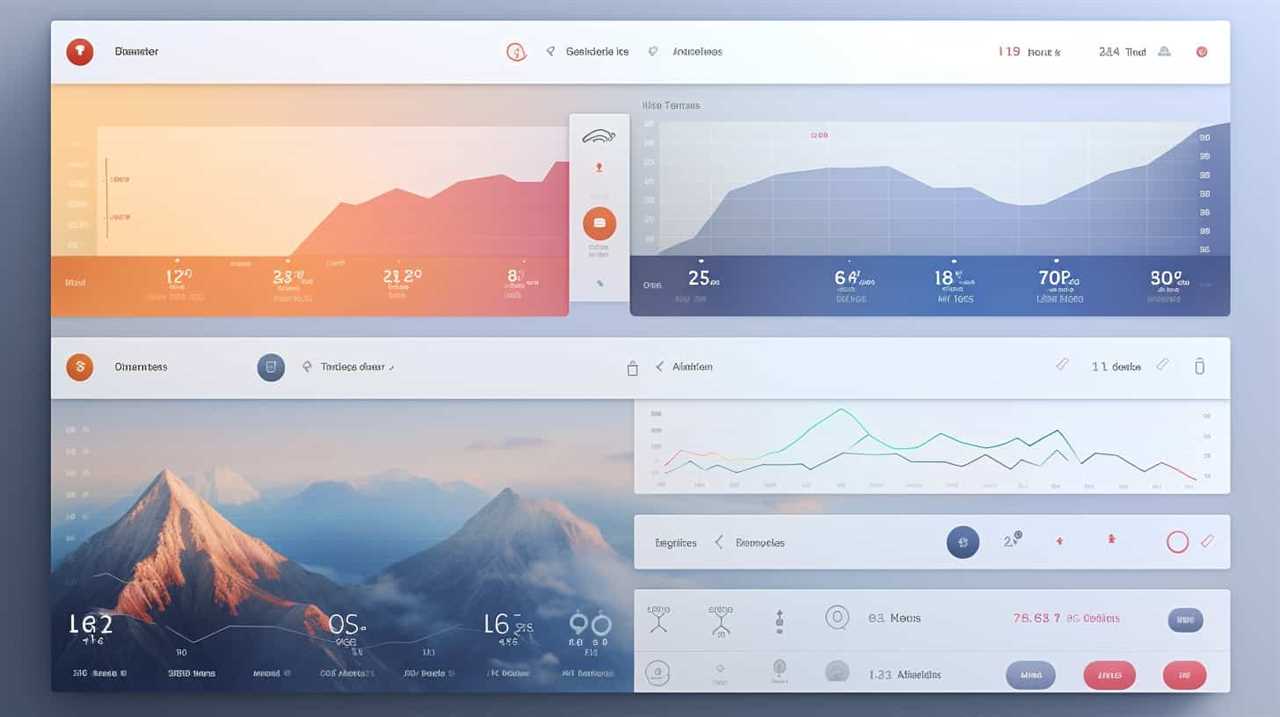If you’re looking to master technical SEO, you’ve landed in the right place.
In this article, we’ll delve into the nitty-gritty details of optimizing your website for better rankings.
From understanding the basics to fixing broken links and implementing structured data, we’ll guide you through the essential steps for achieving SEO excellence.
So, let’s dive in and unlock the secrets to boosting your website’s visibility and performance in the digital realm.

Key Takeaways
- Well-structured website architecture is essential for effective crawling and indexing.
- Regularly audit and fix broken links and redirects to maintain website accessibility and user experience.
- Implement structured data using schema markup to help search engines understand webpage content and increase click-through rates.
- Conduct regular website audits to identify technical issues, improve security measures, and ensure code quality and adherence to best practices.
Understanding Technical SEO Basics
To understand technical SEO basics, we need to delve into the fundamental concepts and principles that govern the optimization process.
One of the key aspects of technical SEO is website architecture. A well-structured website architecture ensures that search engines can easily navigate and understand the content on your site. It involves organizing your website’s pages, categories, and subcategories in a logical and hierarchical manner. This helps search engines crawl and index your site more effectively, leading to improved visibility in search results.
Another important element of technical SEO is the use of canonical tags. These tags help solve the issue of duplicate content by specifying the preferred version of a webpage. By using canonical tags, you can tell search engines which version of a page should be considered the authoritative one. This helps prevent issues like duplicate content penalties and ensures that your website’s ranking potential isn’t diluted by duplicate versions of the same content.
Understanding website architecture and implementing canonical tags are crucial steps in mastering technical SEO. By optimizing these aspects, you can improve your website’s visibility and ensure that search engines can effectively crawl and index your content.

Optimizing Website Speed for Better Rankings
In order to achieve better rankings, we must focus on optimizing website speed. A fast-loading website not only improves user experience but also sends positive signals to search engines. Here are some key techniques to optimize website speed:
- Minimize HTTP requests by reducing the number of files and scripts on your website.
- Compress images and use lazy loading to ensure faster loading times.
- Implement browser caching to store static resources and reduce server requests.
- Improve server response time by using a reliable hosting provider and optimizing server configurations.
Mobile optimization techniques and improving server response time are crucial factors in enhancing website speed. By implementing these strategies, you can provide a seamless browsing experience for your users and increase your chances of ranking higher in search engine results pages.
Fixing Broken Links and Redirects
After optimizing website speed, our next focus in technical SEO is addressing broken links and redirects.
Fixing crawl errors and improving user experience are essential for maintaining a healthy website. Broken links occur when a webpage no longer exists or has been moved, resulting in a dead end for users and search engine crawlers. This negatively impacts user experience and can lead to a decrease in organic traffic. By regularly auditing and fixing broken links, we ensure that our website remains accessible and user-friendly.

Redirects, on the other hand, are used to guide users and search engines to a new URL when a page has been permanently moved or deleted. Implementing the correct redirects, such as 301 redirects, helps preserve search engine rankings and ensures a seamless user experience. It’s important to monitor and fix crawl errors and redirects to maintain a well-optimized website.
Implementing Structured Data for Enhanced Search Results
Let’s dive into how we can use structured data to enhance search results. Implementing structured data can greatly improve mobile optimization and enhance meta tags for better click-through rates. Here are four key strategies to consider:
- Use schema markup: Adding schema markup to your website’s HTML helps search engines understand the content and context of your pages, leading to more relevant search results.
- Optimize for rich snippets: Structured data can enable your website to appear as a rich snippet in search results, providing users with more information and increasing click-through rates.
- Utilize JSON-LD: JSON-LD is a lightweight and efficient way to implement structured data on your website, providing search engines with clear and concise information about your content.
- Test and monitor: Regularly test your structured data using tools like Google’s Structured Data Testing Tool and monitor performance to ensure that it’s correctly implemented and producing the desired results.
Performing Regular Website Audits for Technical Issues
To continue our discussion, we will now delve into performing regular website audits to identify and address any technical issues. Regular website audits are crucial for maintaining a healthy and optimized website. These audits help in identifying crawl errors and improving website security, among other technical issues. By conducting regular audits, we can ensure that our website is functioning smoothly, providing a seamless user experience, and adhering to the best SEO practices.
During a website audit, it is essential to examine various aspects of our website, including its architecture, code quality, on-page elements, and server configuration. To assist you in this process, we have provided a table below that outlines the key areas to focus on during a website audit:

| Aspects to Consider | Description |
|---|---|
| Crawl Errors | Identify any issues that prevent search engines from crawling and indexing your website correctly. This may include broken links, server errors, or incorrect robots.txt configuration. |
| Website Security | Evaluate your website’s security measures to protect against potential threats and vulnerabilities. This may involve checking for SSL certificate installation, implementing secure authentication methods, and regularly updating software and plugins. |
| Code Quality | Assess the quality of your website’s code to ensure it follows best practices and is optimized for search engines. This may include validating HTML and CSS, optimizing JavaScript, and removing any unnecessary code or tags. |
| On-Page Elements | Review the on-page elements of your website, such as meta tags, headers, and URLs, to ensure they are optimized for visibility and relevance. This may involve optimizing title tags, meta descriptions, heading structure, and URL structure. |
Frequently Asked Questions
How Does Technical SEO Differ From On-Page and Off-Page SEO?
When it comes to SEO, there are different aspects to consider: technical SEO, on-page SEO, and off-page SEO.
On-page and off-page SEO focus on optimizing content and building external links. This involves keyword research, optimizing meta tags, creating high-quality content, and acquiring backlinks from reputable sources.
Technical SEO, on the other hand, is all about improving the technical aspects of a website. This includes optimizing site speed, fixing broken links, improving site architecture, and ensuring proper indexing.
Technical SEO is crucial for website optimization as it lays the foundation for good user experience and search engine visibility. By addressing technical issues, such as slow loading times or broken links, you can enhance the usability of your website and make it more accessible to search engine crawlers.

What Are Some Common Technical SEO Issues That Can Negatively Impact Website Rankings?
Common technical SEO issues can have a negative impact on website rankings. These issues include:
- Slow page load times
- Broken links
- Duplicate content
- Improper use of header tags
When these problems occur, search engines may struggle to crawl and index the website effectively, leading to lower rankings.
It’s crucial to identify and fix these issues to ensure optimal website performance and improve search engine visibility.
Can Using a Content Delivery Network (Cdn) Improve Website Speed and Seo?
Using a content delivery network (CDN) can greatly improve website speed and SEO.

One interesting statistic shows that websites using a CDN experience an average 70% decrease in page load time. This is because a CDN helps distribute website content across multiple servers, reducing the distance between the user and the server, resulting in faster load times.
Additionally, a CDN can benefit SEO by improving website performance, as faster-loading pages tend to rank higher in search engine results.
How Can I Identify and Fix Duplicate Content Issues on My Website?
Identifying and fixing duplicate content is crucial for maintaining a high-performing website.
We understand the importance of this task and have developed effective strategies to tackle it.

By conducting a thorough content audit, we can pinpoint any instances of duplicate content on your site.
From there, we implement technical solutions such as canonical tags and 301 redirects to consolidate and redirect duplicate pages.
This meticulous approach ensures that your website remains optimized and avoids any negative impact on SEO.
What Are the Best Practices for Optimizing Images for SEO Purposes?
When it comes to optimizing images for SEO purposes, there are several best practices that we should follow.

Optimizing images plays a crucial role in improving website performance and search engine rankings.
By using proper image compression techniques, adding descriptive alt tags, and optimizing file names, we can enhance the visibility and accessibility of our images.
Including relevant keywords in the image file names, captions, and surrounding text also helps search engines understand the context of our images, boosting their SEO value.
Conclusion
In conclusion, mastering the art of technical SEO is crucial for boosting your website’s rankings and visibility. By optimizing website speed, fixing broken links, implementing structured data, and conducting regular website audits, you can ensure that your site is fully optimized and free from technical issues.

This will ultimately lead to improved search engine results and increased organic traffic. So don’t wait any longer, dive into the world of technical SEO and watch your website soar to new heights with the power of hyperbolic success.










